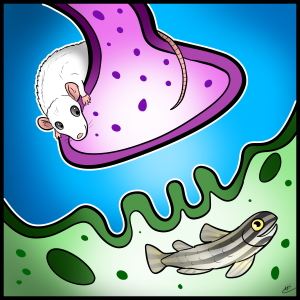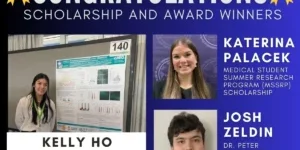New Publication: Activities of daily living in myotonic dystrophy type 1
Our new paper on activities of daily living in patients with myotonic dystrophy type 1 (DM1) is now available online at Acta Neurologica Scandinavica. We were pleased to work with collaborators from Stockholm, Newcastle, London, Glasgow, Maastricht, and Freiburg on this project, which formed part of the PhenoDM1 study (NCT02831504) and included data from 192 individuals with DM1.
The recent development of potential therapies for DM1 has resulted in a need to map out the natural history of the disease to aid the design of clinical trial programs. Using a previously designed scale for self-reporting of daily living activities (DM1-Activc) we showed that patients struggled most with more challenging activities such as running, standing on one leg and carrying heavy objects and that the overall DM1-Activc score decreased with increased disease duration; however, most patients were still able to perform activities of daily living, like grooming and showering, throughout the course of their disease. In addition, the progenitor CTG repeat length in the patient cohort correlated with DM1-Activc scores, adding to the evidence suggesting that repeat length is the most important determinant of the biology of the disease.
Activities of daily living in myotonic dystrophy type 1.
Landfeldt E, Nikolenko N, Jimenez-Moreno C, Cumming S, Monckton DG, Faber CG, Merkies ISJ, Gorman G, Turner C, Lochmüller H.
Acta Neurol Scand. 2019 Dec 30. doi: 10.1111/ane.13215.
PMID: 31889295
Abstract
Objectives
The objective of this cross‐sectional, observational study was to investigate performance of activities of daily living in patients with myotonic dystrophy type 1 (DM1).
Materials & Methods
Adults with genetically confirmed DM1 were recruited from Newcastle University (Newcastle upon Tyne, UK) and University College London Hospitals NHS Foundation Trust (London, UK). Data on activities of daily living was recorded through the DM1‐ActivC (scale scores range between 0 and 100, where a higher/lower score indicates a higher/lower ability).
Results
Our sample comprised 192 patients with DM1 (mean age: 46 years; 51% female). Patients reported most difficulties with running, carrying and putting down heavy objects, and standing on one leg, and least difficulties with eating soup, washing upper body, and taking a shower. Irrespective of the disease duration (mean: 20 years), most patients were able to perform basic and instrumental activities of daily living (e.g., personal hygiene and grooming, showering, eating, cleaning, and shopping), with the exception of functional mobility/transfer tasks (e.g., walking uphill and running). The mean DM1‐ActivC total score was estimated at 71 (95% CI: 68–74). Estimated progenitor cytosine‐thymine‐guanine repeat length and age explained 27% of the variance in DM1‐ActivC total scores (p < 0.001).
Conclusions
We show that DM1 impairs performance of activities of daily living, in particular those requiring a high degree of muscle strength, stability, and coordination. Yet, across the evolution of the disease, the majority of patients will still be able to independently perform most basic and instrumental activities of daily living.







